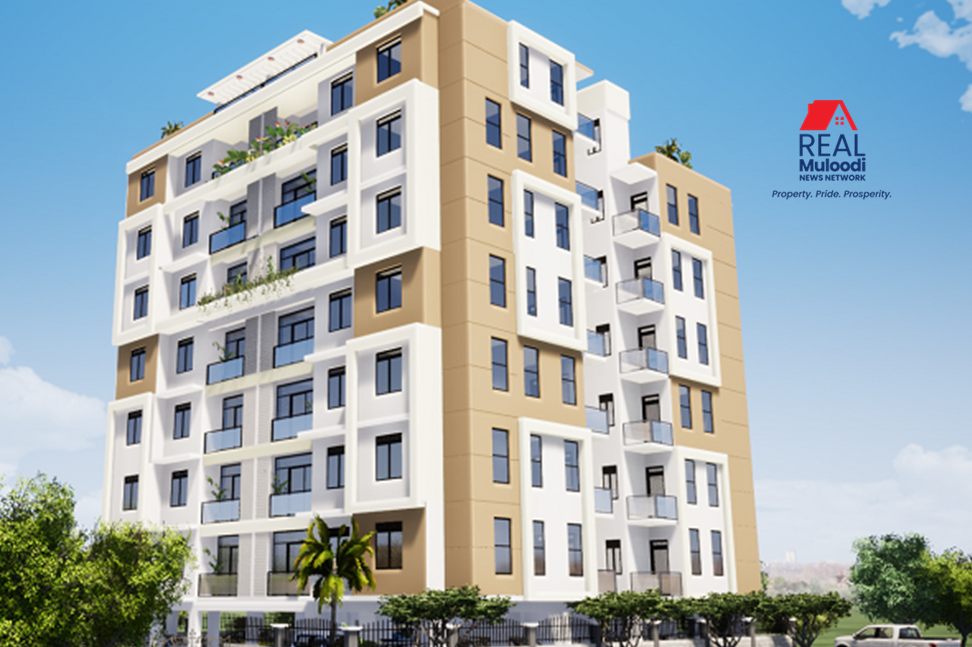UGANDA, Kampala | Real Muloodi News | High-rise living is becoming increasingly popular in Uganda’s urban centres. Urban planners see high-rise buildings as a solution to the housing shortage and a way to maximise real estate footprint.
Over the past decades, the skylines of suburbs like Kololo, Naguru, Mutungo, Bukoto, and Muyenga have transformed with the addition of high-rise buildings.
The introduction of condominiums has further fueled this trend, supported by rising land prices around Kampala.
Economic Factors Driving High-Rise Development
The growth of high-rise residential properties in Uganda is driven by high land prices. Investors find it more economical to build multi-story properties on expensive plots to quickly recoup their investments.
The Condominium Act of 2002 has also played a crucial role by allowing developers to construct high-rise residential and commercial properties for sale to investors.
Defining High-Rise Buildings
A high-rise building is typically defined as a structure exceeding 75 feet. However, definitions can vary; in some regions, buildings with five to seven stories are considered mid-rise, while those with eight or more qualify as high-rise.
Residential high-rise structures are Tower Blocks or Multi-Dwelling Units (MDUs). These buildings require mechanical vertical transit systems, such as elevators, and must adhere to strict fire safety regulations and provide appropriate exits for emergencies.
Location and Accessibility
High-rise buildings are often located closer to city centres than residential suburbs. This proximity attracts the middle class, who prefer living closer to their workplaces to reduce travel costs and time.
Over the past 20 years, property industry trends have pushed the middle class further from city centres, but rising fuel prices and expanding suburbs may reverse this trend.
As Uganda’s population grows, more peri-urban areas will experience population influxes, making commuting to the city less feasible. Experts and investors anticipate a boom in high-rise living in city centres.
Choosing the Right Floor
Selecting an apartment in a high-rise building depends on individual needs. Lower-floor apartments offer quicker outdoor access without needing an elevator and are usually more affordable.
However, they are more exposed to street noise and lack stunning city views, making them popular among families with young children and the elderly.
Middle-floor apartments provide a good view without long elevator waits and are less expensive than top-floor units. The downside is potential noise from neighbours above, below, and on each side, unless the building is well soundproofed.
Top-floor apartments are expensive due to their scenic views and elevation above street noise. However, occupants may feel the building sway more and rely entirely on the elevator. Higher floors may lack outdoor space or windows that can be opened.
Benefits of High-Rise Living
Breathtaking Views
High-rise living in Kampala offers residents stunning views. Adrine Tusiime, a resident of a high-rise condominium in Muyenga, highlights the appeal: “The enchanting views of Lake Victoria from my living room are a daily delight. The twinkling city lights below create a mesmerising ambiance as day turns into night.”
Convenience
High-rise buildings often come with amenities like swimming pools, gyms, and tight security, providing a level of convenience unmatched by bungalows.
Property managers handle the general running of the building, freeing residents from maintenance hassles. Jim Mugerwa, a resident of a high-rise in Kololo, finds it convenient for his work at a nearby embassy.
“I don’t worry about long commutes and enjoy swift access to city amenities, entertainment venues, and supermarkets,” he says.
Challenges of High-Rise Living
High-rise living is not without its challenges. Families with children often prefer lower floors due to safety concerns. A resident pointed out that children sometimes misuse elevators, causing inconvenience.
“Strong management committees and strict rules are essential for these properties,” the resident noted.
Cost Considerations
Living in high-rise apartments is expensive due to their prime locations and high construction standards. Rental charges often include amenities like swimming pools, gyms, and 24-hour security, increasing costs.
Additionally, high-rise buildings in city centres can be noisier, which may not appeal to everyone.
As urbanisation continues, high-rise living is expected to grow in Uganda. Developers will likely innovate to meet rising demand, balancing affordability, sustainability, and infrastructure challenges.
High-rise living offers numerous advantages, including breathtaking views, convenience, and proximity to city amenities, making it an attractive option for urban dwellers.
READ MORE LIKE THIS:



